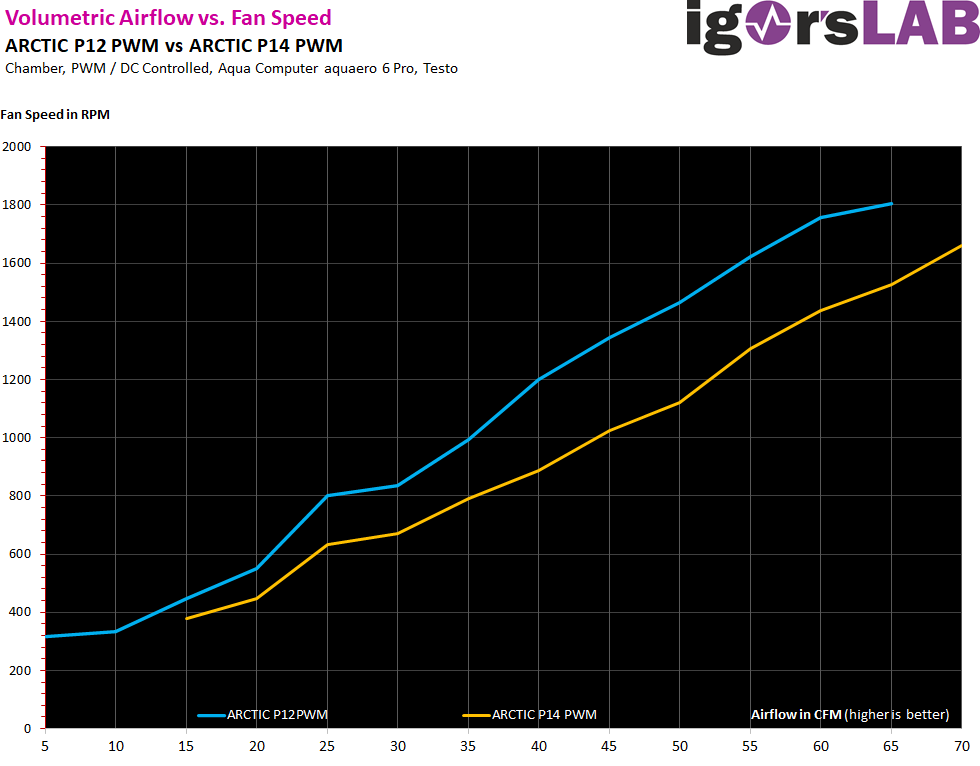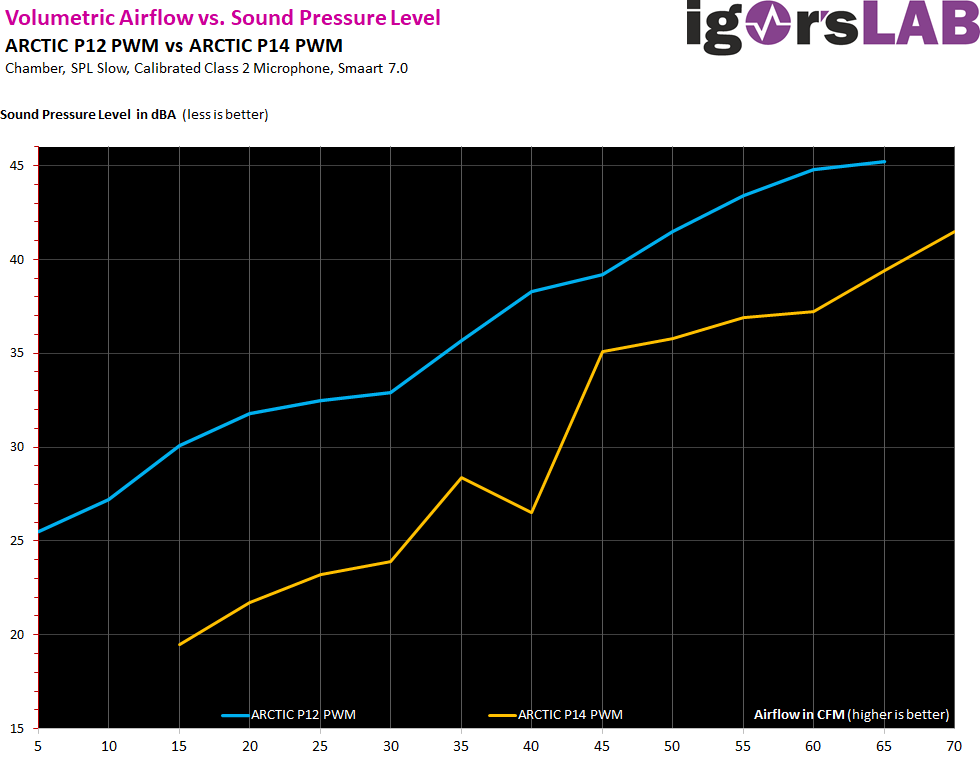Stepwise measurement of the volume flow
Before we get to the sound details, let’s preface the measurement of the volume flow at 5-cfm intervals. Here we see the complete speed range in relation to the generated volume flow and later also to the noise level. This fine gradation costs a lot of time for the measurements, but it is the only way to see all the “messes” that can negatively influence the normal fan operation depending on the speed. First of all, however, let us consider how the speeds relate to the respective volume flow
Apart from the kink at approx. 25 cfm, where interestingly both fans, i.e. the P12 and the P14, show a slight anomaly (weakness) and for the given volume flow deviate proportionally require somewhat higher speeds than for the other gradations, the rest is really very balanced for both models. So we can’t yet see from this curve where and why the fan celebrates an acoustic life of its own at certain speeds. The fact is that “humming” thus has no effect on performance.

This is exactly why we now take a look at the curve of the sound pressure level, which now already agonizes differently in relation to the volume flow. There’s a nasty peak at about 35 cfm, where 800 rpm is present, and then another wider rpm range between about 950 and 1050 rpm at 42 to about 50 cfm, where the sound pressure level rises disproportionately. So we know where to look.

Before we take a closer look at one of the peaks on the next page, and before I explain the frequency analysis of the recorded spectrum to you, we will do the dreaded “station search”, where we will run through the fan operation from the lowest to the highest speed. And please don’t be alarmed, we’ve amplified the whole thing a bit so you can hear it better. So don’t set your listening level too high, this develops like Maurice Ravel’s Bolero – from delicate pianissimo to brutal fortissimo. I warned you!
If the speakers have survived the whole thing up to this point, we will now go into detail on the last page.



































Kommentieren